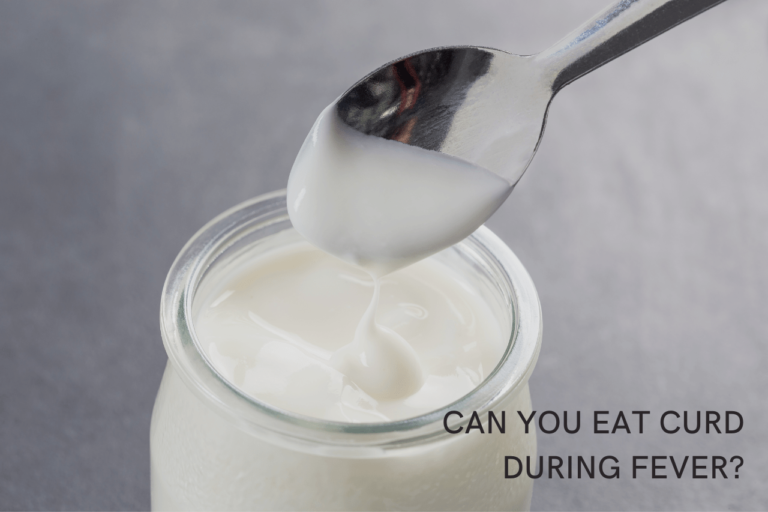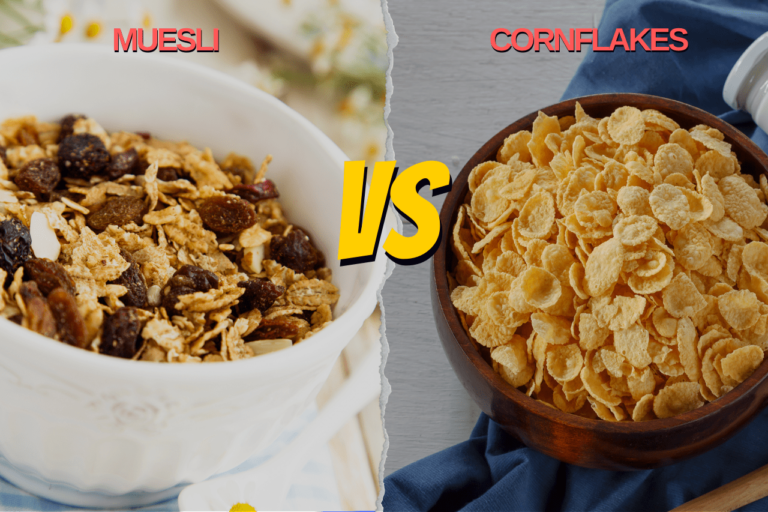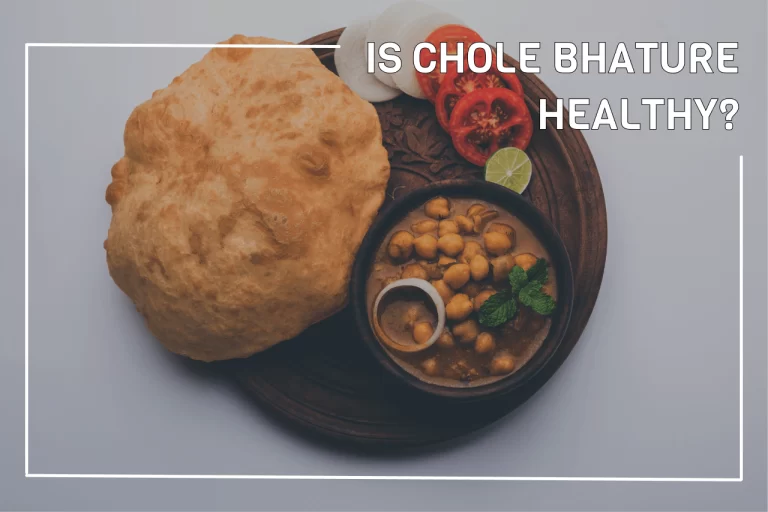Bread is possibly one of the most important inventions in food history. Today, there are over 100 different types of bread available on the market, with white and brown bread being the most popular and widely consumed. Brown bread has become increasingly popular in recent years. It is frequently marketed as a “healthier” alternative to white bread.
But the question is whether this is truly the case. Is brown bread healthier than white bread?
There are many things that consumers should know about the difference between brown bread and white bread. In this post, I have compare and contrast these two types of bread to help you decide which is the best option for you.
Also read: 9 Health Benefits And Nutritive Values of Brown Bread
How is white bread made?
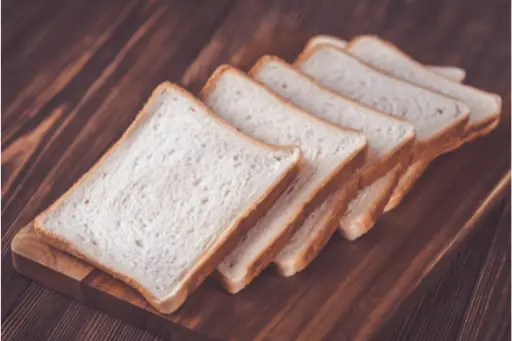
White bread is an everyday staple in many people’s diets. It’s tasty and inexpensive. But have you ever thought about how this bread is made?
A basic loaf of bread is made with three simple ingredients: wheat grain, water, and yeast.
Wheat grain is the essential ingredient, which is composed of three parts: bran (outer part), endosperm (inner part), and germ (outerpart).
the bran is the primary source of:
- Fiber
- Vitamins B
- Iron
- Magnesium
- Minerals
the germ is the primary source of:
- Protein
- Vitamin E
- Antioxidants
- Healthy fats
And the endosperm contains most of the carbohydrates.
White bread is bread made from wheat grain from which the bran and germ are removed. In other words, white bread is made entirely from the endosperm of the wheat grain. While this process makes it lighter in color, it also removes the fiber, protein, and minerals found in the bran and germ of the wheat. As a result, white bread is not regarded as nutrient-dense bread.
However, most white breads on the market today are enriched, which means that nutrients lost during the refining process have been replaced artificially, making them more healthy and nutritious.
How is brown bread made?
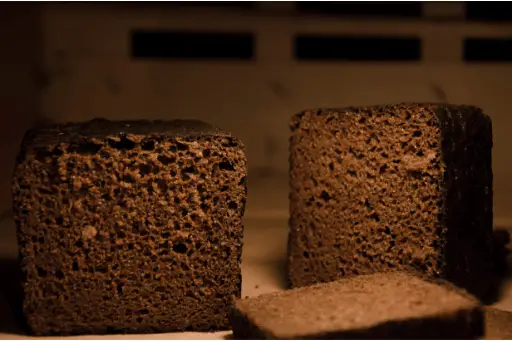
Brown bread is made with wheat flour that contains all of the grain’s components, including the bran, germ, and endosperm. Because of bran and germ addition, brown bread retains healthy fats, protein, vitamins, minerals, and fiber.
As a result, brown bread is more nutritious and is considered a healthier alternative to white bread.
But what gives the bread its brown color?
Brown bread gets its color from the addition of a browning agent. The browning agent can be one of two types: caramel (a complex mixture of sugars including glucose, sucrose, and fructose that produces the brown color) or molasses (a black sticky by-product of the white sugar manufacturing process).
In a nutshell, white bread contains only the grain’s endosperm, whereas brown bread contains all three parts of the grain, making it more nutritious.
But wait a minute! This is not the end of the story; there is much more to learn, so let’s take a closer look at the comparison.
Brown bread vs White bread: Nutritional comparison
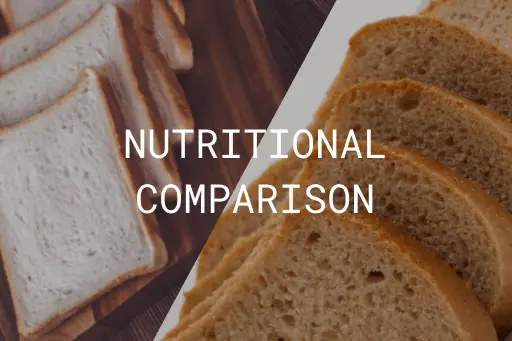
Protein
Brown bread = 13g protein per 100g
White bread = 9g protein per 100g
Protein is used in every cell of your body, which is why it is often referred to as the “building block of life.” It is required for body tissue growth, repair, and maintenance. It is also involved in producing enzymes, hormones, and antibodies.
While both types of bread contain protein, brown bread contains more than white bread. This is because brown bread is made from the grain’s germ, which contains protein.
Fiber
Brown bread = 4.7g fiber per 100g
White bread = 2.7g fiber per 100g
Fiber is one of the essential nutrients to include in your diet when it comes to healthy eating. Fiber aids digestion prevents constipation, lowers cholesterol, and keeps blood sugar stable.
While both breads contain fiber, brown bread contains more than white bread because fiber is removed during the refining process from the white bread.
Calories
Brown bread = 313 calories per 100g
White bread = 265 calories per 100g
There is a common misconception that white bread contains more calories than brown bread. While brown bread has more fiber and protein, it doesn’t mean that its calories are lower than white bread.
On the contrary, some brown breads in the market have more calories than white bread. It is preferable to read the label on the bread packet before purchasing.
Carbohydrates
Brown bread = 50g carbs per 100g
White bread = 49g carbs per 100g
Carbohydrates are required for your body to function correctly. Your body converts carbohydrates into glucose, which provides energy to your muscles and other cells.
Brown and white bread both have a high and almost equal carbohydrate content.
Sugar
Brown bread = 6g sugar per 100g
White bread = 5g sugar per 100g
Brown bread is truly healthier than white bread due to its high fiber and protein content, but the sugar levels in some of these breads are concerning. However, there isn’t much of a difference in sugar content between the two types of bread, but it’s still important to know.
The brown bread is made with whole-grain flour, which is bitter. So, the manufacturer adds sugar to it to make it sweet and delicious.
As a result, the sugar content of brown bread rises compared to the natural sugar content of white bread.
Calcium
Brown bread = 165mg calcium per 100g
White bread = 260mg calcium per 100g
Calcium is a necessary nutrient for your body. It is the backbone of bones and aids in blood clotting and muscle contraction. While brown bread contains more essential nutrients than white bread, it contains less calcium.
Iron
Brown bread = 4.1mg iron per 100g
White bread = 3.6mg iron per 100g
Iron is a mineral the body needs to produce red blood cells; without it, people can develop iron deficiency called anemia.
Low iron levels in the body can cause shortness of breath, weakness, pale skin, irritability, and fatigue. If you have low iron levels, you should know that there are healthy ways to boost your iron levels.
Both brown and white bread are good sources of iron. In fact, they have more iron than shellfish, spinach, and red meat.
Potassium
Brown bread = 223mg potassium per 100g
White bread = 115mg potassium per 100g
Potassium is a mineral that is necessary for the body’s electrolyte and acid-base balance, nerve impulse transmission, and normal heart function. You may experience irregular heartbeat, muscle weakness, and fatigue if you do not get enough potassium in your body.
Potassium is found in both brown and white bread. However, brown bread has 80 percent more potassium than white bread, making it an ideal and healthier choice.
Magnesium
Brown bread = 82mg magnesium per 100g
White bread = 25mg magnesium per 100g
Magnesium is a mineral necessary for the formation of new cells, the repair of damaged tissue, and the maintenance of the heart, muscles, and bones. If you consume enough magnesium, you may reduce your heart attack or stroke chances.
Brown bread is three times higher in magnesium than white bread, making it ideal for people who want to keep their hearts healthy.
Glycemic index
Brown bread = 56 to 59
White bread = 71
The glycemic index (GI) ranks carbohydrates on a scale of 1 to 100 based on their effect on blood sugar. It tells you how much and how quickly carbohydrate-containing foods raise blood sugar after eating.
The GI of brown bread is low compared to white bread, making it an ideal choice for people with diabetes.
Brown bread vs White bread: Benefits comparison
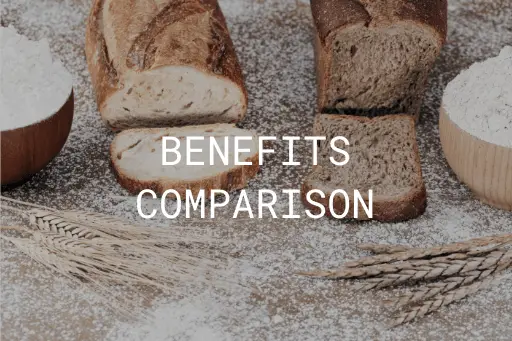
Digestion
Digestion has a significant impact on your overall health. In fact, being healthy is nearly impossible without a healthy digestive system.
Brown bread is better for digestion than white bread for two reasons:
- Brown bread contains a lot of dietary fibre, both soluble and insoluble, which can help prevent many gastrointestinal problems.
- Some of the dietary fibre in brown bread acts as a natural prebiotic, promoting the growth of beneficial microflora in the large intestine.
Weight loss
The most common mistake that dieters make when trying to lose weight is believing that things like calorie counting and carb counting are more effective than they actually are.
The truth is that healthy eating and exercise are the most powerful tools for weight loss. If you want to lose weight, start by eating a healthy diet and exercising on a regular basis.
Although white bread is low in calories, carbohydrates, and sugar, it lacks the nutritional value of brown bread. Many experts believe that people trying to lose weight should eat brown bread because it is high in fibre, protein, and other nutrients.
Furthermore, always choose brown bread with low sugar and no added sweeteners. It’s best to go with 100% whole wheat bread.
Diabetes
Even though white and brown bread have nearly the same amount of carbs and sugar, white bread is not recommended for diabetes due to its high glycemic index (GI).
Brown bread has a lower glycemic index than other types of bread because it contains more fibre, which slows the rise in blood sugar levels caused by carbohydrates. As a result, it is a healthier option for people with diabetes.
Furthermore, the American Diabetes Association also suggests choosing whole grain bread or 100 percent whole-wheat bread instead of white bread.
Pregnancy
Eating a well-balanced, nutrient-dense diet is critical for both you and your baby during pregnancy.
But what type of bread is best to eat while pregnant?
Eating brown bread over white bread can benefit you in a variety of ways during pregnancy, including:
- Brown bread is high in fibre, which can help with constipation, a common problem during pregnancy.
- It is a natural source of essential nutrients like antioxidants, vitamin E, vitamin C, and folate.
- A woman’s weight must be controlled during pregnancy, and eating 100% whole-grain bread can help with this because it is high in fibre and protein.
- Brown bread contains essential nutrients such as iron and B vitamins, which aid your baby’s growth and development.
Although eating brown bread is safe, it is important not to eat too much of it and to choose brown bread free of sugar and other sweeteners. It would also be preferable if you use gluten-free or low-gluten brown bread.
Heart health
According to studies, people who eat white bread are more likely to develop cardiovascular disease than those who eat brown bread.
Choosing brown bread over white bread is beneficial to your heart in a variety of ways, including:
- Brown bread contains more potassium than white bread, an essential nutrient to keep your heart healthy.
- Brown bread contains more antioxidants than white bread, linked to a lower risk of cardiovascular disease.
- The high dietary fibre content of brown bread can help lower cholesterol and lower the risk of heart disease, stroke, obesity, and Type 2 diabetes.
- Brown bread has a low glycemic index, which helps to regulate blood sugar levels and prevents artery damage.
Final words: Which one is better?
As you can see, there are numerous benefits to eating brown bread over white bread. It can help with digestion, is a good choice for pregnant women, is good for your heart, is a good choice for diabetics, and can also aid in weight loss. It also has a better taste and texture than white bread and is higher in many essential nutrients.
Furthermore, always read the ingredients carefully before purchasing bread, and look for the fewest ingredients. Ensure the ingredients list includes ‘whole wheat flour’ or ‘100% whole wheat grain.’
So, the next time you want to eat bread, choose brown bread over white bread.

